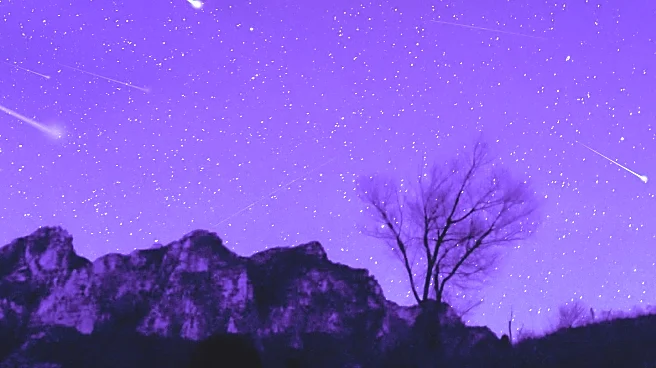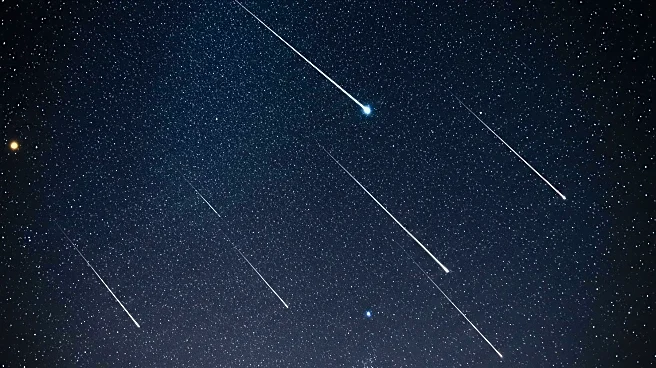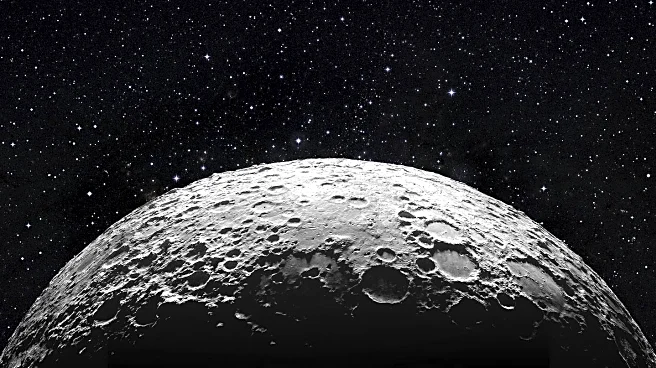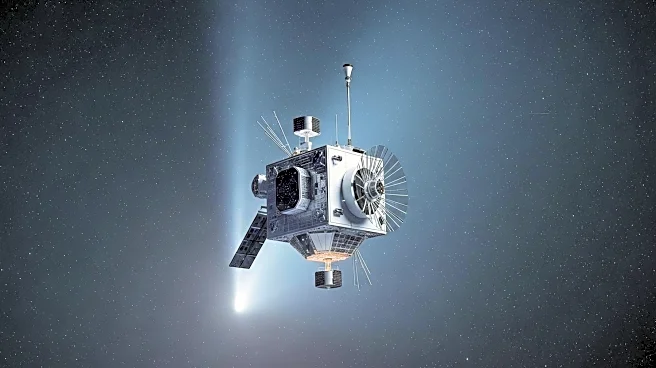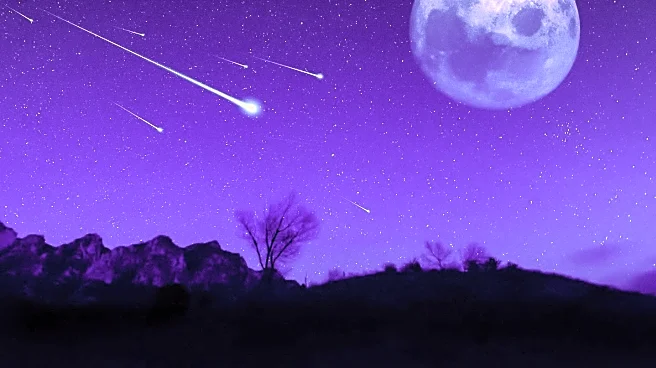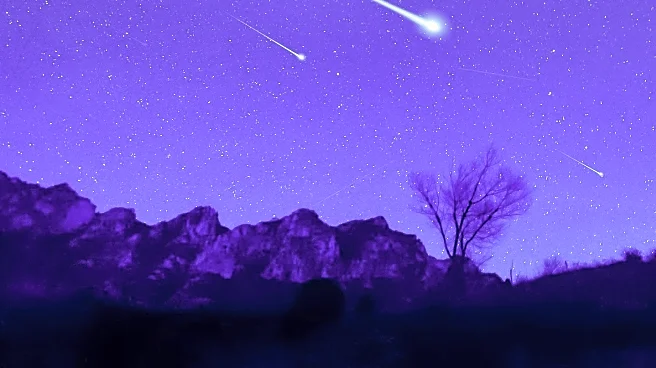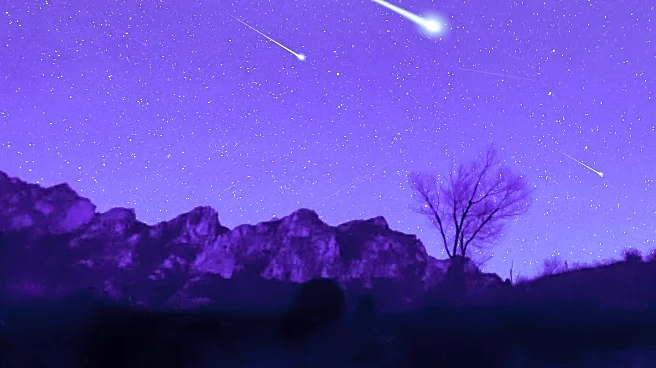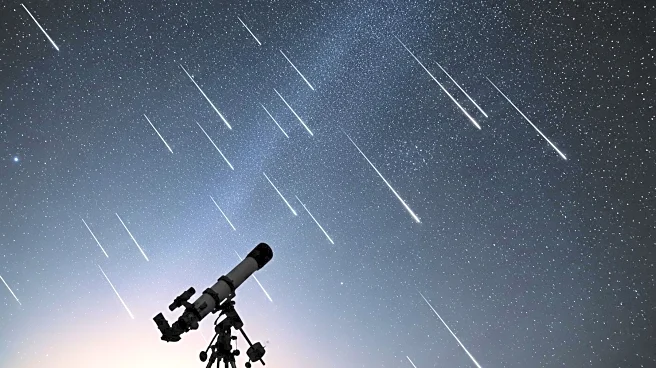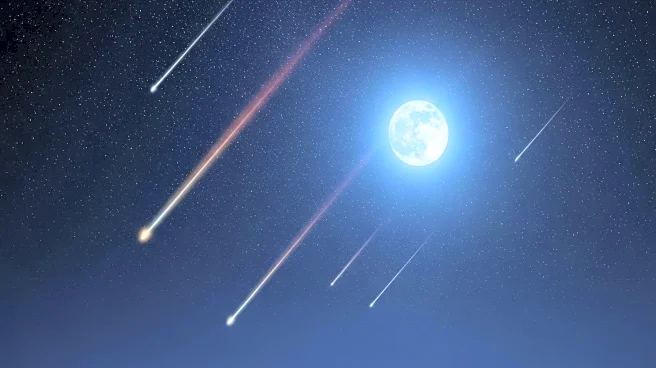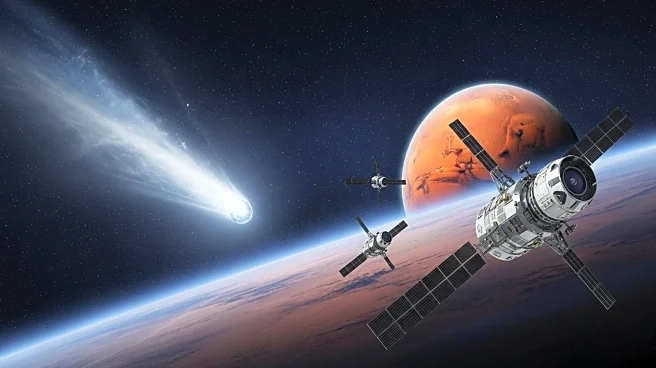What's Happening?
The Draconid meteor shower is set to peak over the next three nights, with the best viewing opportunity occurring tomorrow night. Unlike most meteor showers, the Draconids are best observed in the early evening rather than after midnight. The meteors appear to originate from the head of Draco, the dragon constellation, which will be nearly straight overhead at 7 p.m. tonight. This shower is characterized by slow-moving meteors, making it easier to distinguish true Draconid meteors from other stray grains of dust entering Earth's atmosphere. However, the full moon may obscure many of the dimmer meteors. The Draconid meteor shower is associated with Comet 21P/Giacobini-Zinner, and its unique timing offers a rare 'early to bed' viewing experience.
Why It's Important?
Meteor showers like the Draconids provide valuable opportunities for both amateur and professional astronomers to observe celestial phenomena and gather data on cometary debris. The Draconid shower's early evening peak allows for broader public engagement, as it is accessible to those who may not typically stay up late for astronomical events. This accessibility can foster interest in astronomy and science education, encouraging more people to explore the night sky. Additionally, observing meteor showers contributes to our understanding of cometary behavior and the composition of meteors, which can have implications for planetary science and the study of the solar system.
What's Next?
As the Draconid meteor shower continues over the next few nights, astronomers and enthusiasts will have the opportunity to observe and document the event. The full moon's brightness may limit visibility, but those interested can still attempt to view the shower and participate in virtual activities related to International Observe the Moon Night. Looking ahead, the next major meteor shower will be the Orionids, which peak later in October. These events provide ongoing opportunities for public engagement and scientific observation, contributing to a deeper understanding of celestial phenomena.
Beyond the Headlines
Meteor showers like the Draconids highlight the dynamic nature of our solar system and the ongoing interactions between celestial bodies. The study of meteors and their origins can offer insights into the history and evolution of comets, as well as the potential for future space exploration missions. Additionally, these events serve as reminders of the interconnectedness of science and culture, as they inspire artistic interpretations and cultural traditions centered around the night sky.

